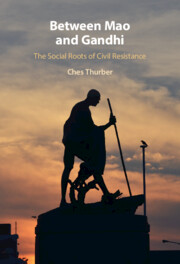
- Cited by 5
-
Cited byCrossref Citations
This Book has been cited by the following publications. This list is generated based on data provided by Crossref.
Chenoweth, Erica 2023. The Role of Violence in Nonviolent Resistance. Annual Review of Political Science, Vol. 26, Issue. 1, p. 55.
Chenoweth, Erica and Cunningham, Kathleen Gallagher 2023. Guest Editors’ introduction: Nonviolent resistance and its discontents. Journal of Peace Research, Vol. 60, Issue. 1, p. 3.
Lo, Kwai Cheung 2023. Bodies and environmental matters in Maoism and Gandhism. International Journal of Asian Studies, Vol. 20, Issue. 2, p. 323.
Belgioioso, Margherita and Thurber, Ches 2024. From doctrine to detonation: Ideology, competition, and terrorism in campaigns of mass resistance. Journal of Peace Research, Vol. 61, Issue. 3, p. 333.
Argomaniz, Javier 2025. Resisting Terror.
- Publisher:
- Cambridge University Press
- Online publication date:
- September 2021
- Print publication year:
- 2021
- Online ISBN:
- 9781108933278
- Subjects:
- Political Sociology, Politics and International Relations, Comparative Politics, Sociology


